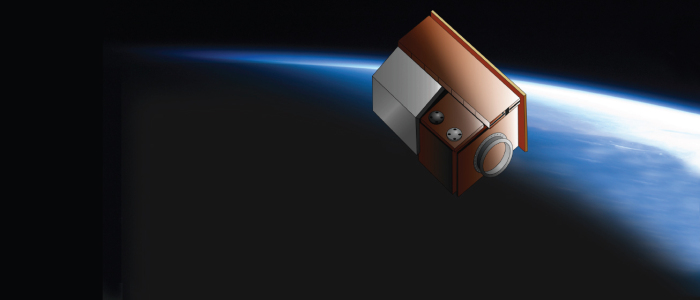Now, the Swedish National Space Board has decided to finance a new satellite for launch in 2017. The Mesospheric Airglow/Aerosol Tomography and Spectroscopy satellite, MATS, will follow the long tradition of such national satellite projects, providing both the technological and scientific community with new goals to reach for.
The new satellite is supposed to investigate waves in the atmosphere, especially the mesosphere, meaning the height between 50 and 100 kilometres. The existence of waves is of great large importance in the air when it comes to figuring out what happens in different parts in the atmosphere. To understand the atmosphere completely the scientists need more knowledge about this transition area and the interaction between the different layers of the air.
There are three research groups and several industrial companies currently contributing to the projects; Department of Meteorology at Stockholm University (MISU) at , Institute for Space- and Geo-Dynamics at Chalmers, Gothenburg and the Institute for Space- and Plasma physic at KTH Stockholm.
The satellite platform and the payloads will also mainly be developed and built in Sweden. Companies, such as OHB, Sweden, ÅAC Microtec in Uppsala and Omnisys Instruments in Gothenburg will contribute to that.
MATS will contribute to more information about the transition zone between the lower and outer atmosphere and the conditions of, and interaction between these two layers. From orbit, MATS will use optical methods to observe light phenomena that are specific for this altitude, and partly it is that light from energy- rich molecules, called airglow, and partly those lights distributed of aerosols, the so-called night shining clouds that form at about the altitude of 80 kilometres. Specific techniques will provide the researchers with three-dimensional pictures of the area, thus, the right type of information about the important area above “our atmosphere” will be extracted.
The biggest challenges for the instrument will be to extract the weak light from the mesosphere from the more sharper light from the Sun and from light in the lower atmosphere.
The total cost for the project is calculated to 120 million SEK or about 12-13 million Euros. Launch is planned for 2017.
The satellite will be built around the InnoSat bus, now during development in Sweden.
Follow Up a Large Success
MATS will follow the very successful Odin satellite, still delivering valuable scientific results after nearly fourteen years in space.
The Odin satellite was launched in February 2001 and was designed to combine two scientific disciplines on a single spacecraft in studies of star formation/early solar system (astronomy) and of the mechanisms behind the depletion of the ozone layer in the earth atmosphere and the effects of global warming (aeronomy).
From a height of 600 km the satellite has been used as a true observatory in order to best respond to scientific challenges. The astronomy mission was successfully concluded in the spring of 2007 and since then the satellite has been used exclusively for studies of the Earth’s atmosphere.
The main instrument on Odin is an advanced radiometer using a 1.1 m telescope, designed to be used for both the astronomy and aeronomy missions.
For the aeronomy mission the payload is complemented by a spectrograph, named OSIRIS (Optical Spectrograph and Infrared Imaging System). OSIRIS provides simultaneous observations in two channels; a UV/Visible channel and an IR channel.
In order to fulfill the scientific requirements Odin is 3-axis stabilized, capable of switching between astronomy and aeronomy modes.
The Swedish Space Corporation, on behalf of the Swedish National Space Board and the space agencies of Canada (CSA), Finland (TEKES) and France (CNES), develops the satellite for astronomers and atmospheric researchers in the participating countries.
The nominal lifetime of Odin was set to 2 years but the scientific results and technical performance have justified a significant extension of the mission. On February 20, 2015, Odin will conclude its 14th year in orbit.
In view of its importance for climatologic studies, ESA has supported the Odin mission since January 2007 as a so- called Third Party Mission, funded within its Earthnet Programme.
Read more about Odin at Swedish National Space Board and at OHB Sweden


